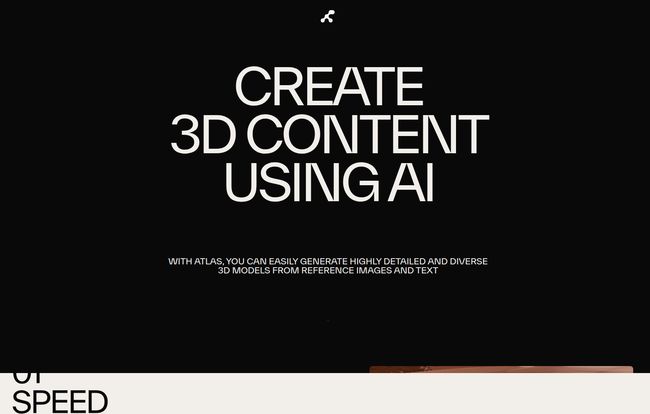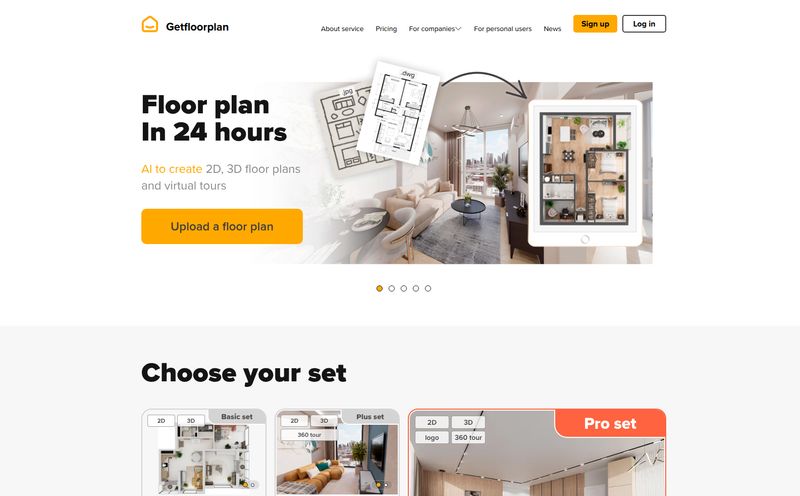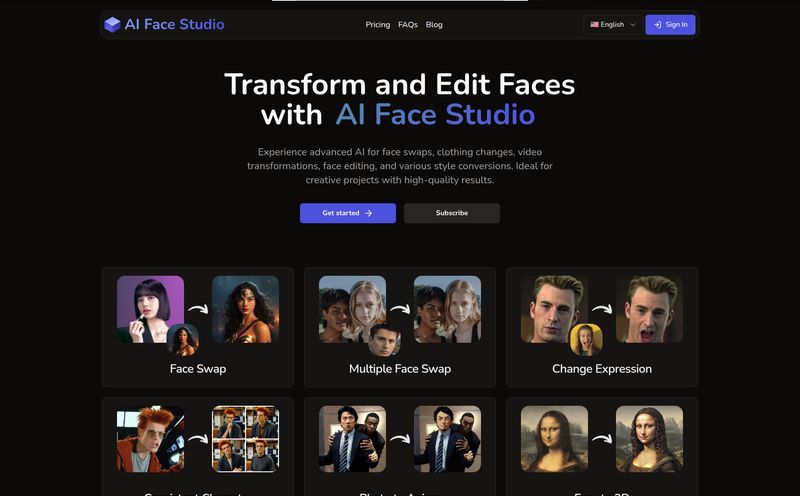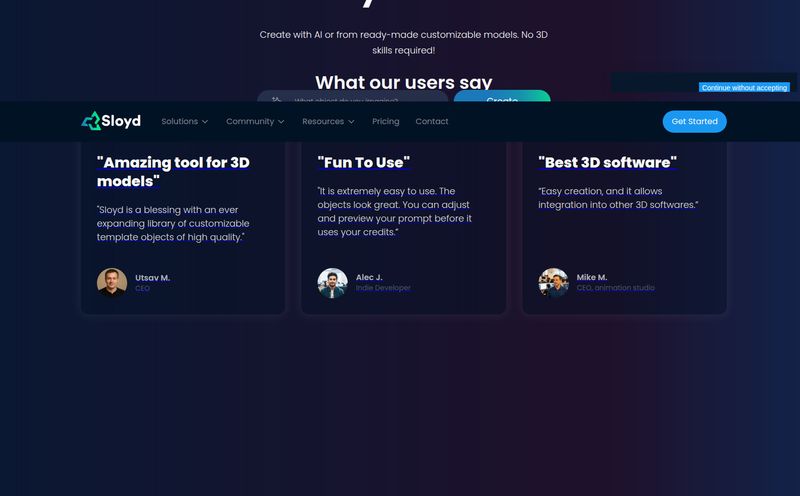As someone who's been kicking around the SEO and digital creation space for years, I’ve seen my fair share of “game-changers.” Every other week there’s a new AI tool that promises to revolutionize our workflows, and half the time it just spits out something that looks like a melted candle and calls it a 'chair'. My hype-meter is, shall we say, well-calibrated and mostly points to 'skeptical'.
But then something like Atlas pops up on my radar. At first, I rolled my eyes. “Create 3D Content Using AI,” the headline blares. Yeah, yeah, I’ve heard it before. But then I saw who was talking about it. We’re talking big names. Names like Square Enix. That... that gets your attention.
So, I put my cynicism on a leash and decided to really look at what this platform is all about. Is it just another flash in the pan, or is it the start of a genuine shift in how we create 3D assets for games, AR, and virtual worlds?
So, What Exactly Is This Atlas Thing Anyway?
In simple terms, Atlas is a generative 3D AI platform. You give it a push—either with a text prompt or some reference images—and it builds a detailed 3D model for you. Think of it less like a magic wand and more like a master apprentice. It still needs your creative direction, but it does all the painstaking, time-sucking grunt work for you. We're talking assets, props, level design elements, even architectural pieces.
But here’s the part that made me lean in. Unlike many generative tools that produce messy, unusable meshes (we’ve all seen them, the digital equivalent of a hairball), Atlas claims to generate models with clean geometry, semantic segmentations, and proper UV mappings. For anyone who has ever spent an entire weekend manually UV unwrapping a single, complex asset... you know that’s the holy grail right there. That’s not a toy; that’s a professional tool.
The Features That Actually Matter to Creators
Let's cut through the marketing fluff. What can it actually do? From what I've gathered, the toolset is built for a start-to-finish workflow.
You have your Text-to-3D and Image-to-3D generation, which is the core of the experience. The idea is to take you from a vague concept in your head to a solid base mesh in minutes, not days. The website boasts that past projects have seen a 200x efficiency gain. Two hundred. I mean, even if thats a bit of an exaggeration, a 20x gain would already change everything for a small studio or solo dev.

Visit Atlas
The real magic, though, is in the quality of the output. The promise of clean topology and ready-to-use UV maps means you’re not just getting a pretty picture; you’re getting a workable asset. An asset you can drop into Unreal Engine, Unity, or your 3D engine of choice without wanting to tear your hair out. The site says it “interfaces with major gaming and 3D engines to provide a nondestructive workflow for creators,” which is exactly what you want to hear.
This All Sounds Great, But Does It Actually Work?
I’ve learned to trust testimonials from people who are actually in the trenches. And Atlas has some heavy hitters in its corner.
"In recent years, the rising cost of game development has become a huge problem for the entire game industry and I am placing great hope in the fact that many of those problems can be solved by technology. I feel the same potential in Atlas' unique technology and look forward to seeing how it will affect the creative field in the future."
- Herbert Richard, Sr. Brand Manager, Square Enix Holdings
When a senior manager from the company behind Final Fantasy is putting their name on it, you listen. That’s not a paid influencer; that’s a sign of a serious B2B relationship. Oliver Brotherhood, CEO of Consortium 9, also mentioned it was the first tool that “actually seems to be a solution” for populating large environments, like an entire city. That speaks volumes about its potential for scale.
The Good, The Bad, and The Complicated
No tool is perfect, right? So let's get real about the pros and the potential drawbacks.
The Obvious Wins
The time savings are the main event. Cutting down asset creation time frees up artists to focus on creativity and allows smaller teams to punch way above their weight. The models are apparently high-quality and detailed, moving beyond the lumpy, abstract shapes we've come to associate with early-stage 3D AI. And its smooth integration into existing pipelines means you don't have to burn down your entire workflow to use it.
A Few Caveats to Consider
First off, it’s a subscription service. No surprises there, but it's something to budget for. Second, this isn't a 'press button, receive game' machine. The docs hint that you’ll get the best results if you already have some 3D design expertise. You still need an artist's eye to guide the AI.
The most interesting point is this: the AI is trained on your own style references in what they call a “closed IP loop.” This is brilliant, and a bit of a double-edged sword. It means the AI learns to replicate your specific aesthetic, ensuring brand consistency. Incredible for a studio. However, it also means you’re not pulling from a vast, public library of styles. It's your personal AI assistant, not a free-for-all creative commons. For professional teams, this is a massive pro.
Let's Talk About the Elephant in the Room... Pricing
So, how much does this magical tool cost? I went looking for a pricing page, clicked the link and… was greeted by a friendly “404 - This page could not be found.”
Classic.
Honestly, this isn’t surprising for a tool of this caliber. It screams “enterprise solution.” This means pricing is likely tailored to the studio or individual, available only after you contact them for a demo. Don't expect a simple three-tiered monthly plan you can click and buy. This is aimed at serious professionals and studios, and the price will likely reflect that.
So Who Is Atlas AI Really For?
After digging in, I think the audience is pretty clear.
- Indie Game Developers: For a small team, this could be a force multiplier, allowing them to create worlds they could only dream of before.
- Large Game Studios: As the Square Enix testimonial suggests, this is a pipeline accelerator. It can handle the grunt work of asset creation, freeing up senior artists for more important tasks.
- Architectural and VFX Artists: The ability to quickly generate props and environmental assets is huge for visualization.
- AR/VR Creators: Building immersive worlds requires a massive amount of 3D content. Atlas seems perfectly positioned to ease that burden.
This isn’t really for the casual hobbyist, at least not yet. It's a professional-grade tool for people who make a living creating 3D content.
My Final Thoughts on Atlas
I started out skeptical, but I’m walking away... cautiously optimistic. Very optimistic, actually. Atlas seems to understand the real pain points of 3D creators. It’s not just about making a cool picture; it’s about making a functional asset that fits into a real workflow. It addresses the tedious, soul-crushing parts of the job like UV mapping and clean topology.
Is it going to replace 3D artists? No. Don’t be ridiculous. But it might just become their most powerful tool, a co-pilot that handles the technical stuff so they can focus on the art. It’s a bold claim, but from what I’ve seen, Atlas might just be one of the first AI tools that truly feels like it was built for us. And I, for one, am excited to see where it goes.
Frequently Asked Questions
- What is Atlas AI?
- Atlas is an advanced generative AI platform that creates high-quality, game-ready 3D models from text prompts and reference images. It's designed to speed up the asset creation workflow for professionals.
- How is Atlas different from other text-to-3D tools?
- The key difference is its focus on professional workflows. Atlas generates models with clean geometry and proper UV maps, making them immediately usable in game engines and 3D software, unlike many tools that produce messy or unworkable meshes.
- Can a beginner use Atlas AI?
- While it streamlines the creation process, you'll likely get the best results if you have some foundational knowledge of 3D design. It's a powerful tool for artists, not necessarily a replacement for artistic skill.
- How much does Atlas AI cost?
- Currently, there is no public pricing available. This typically means Atlas operates on an enterprise model where you need to contact them for a quote or a demo based on your team's needs.
- Does Atlas AI work with Unreal Engine or Unity?
- Yes, Atlas is designed to integrate smoothly into existing pipelines. It states that it interfaces with major gaming and 3D engines, which would include industry standards like Unity and Unreal Engine.
- Is the AI trained on my own assets?
- Yes, one of its unique features is a "closed IP loop," which means the AI learns to create models based on your specific style references. This is great for maintaining a consistent artistic vision.
Reference and Sources
- Atlas Official Website (Note: This is a placeholder URL as the exact one isn't provided)
- Square Enix Holdings
- Kinetix



